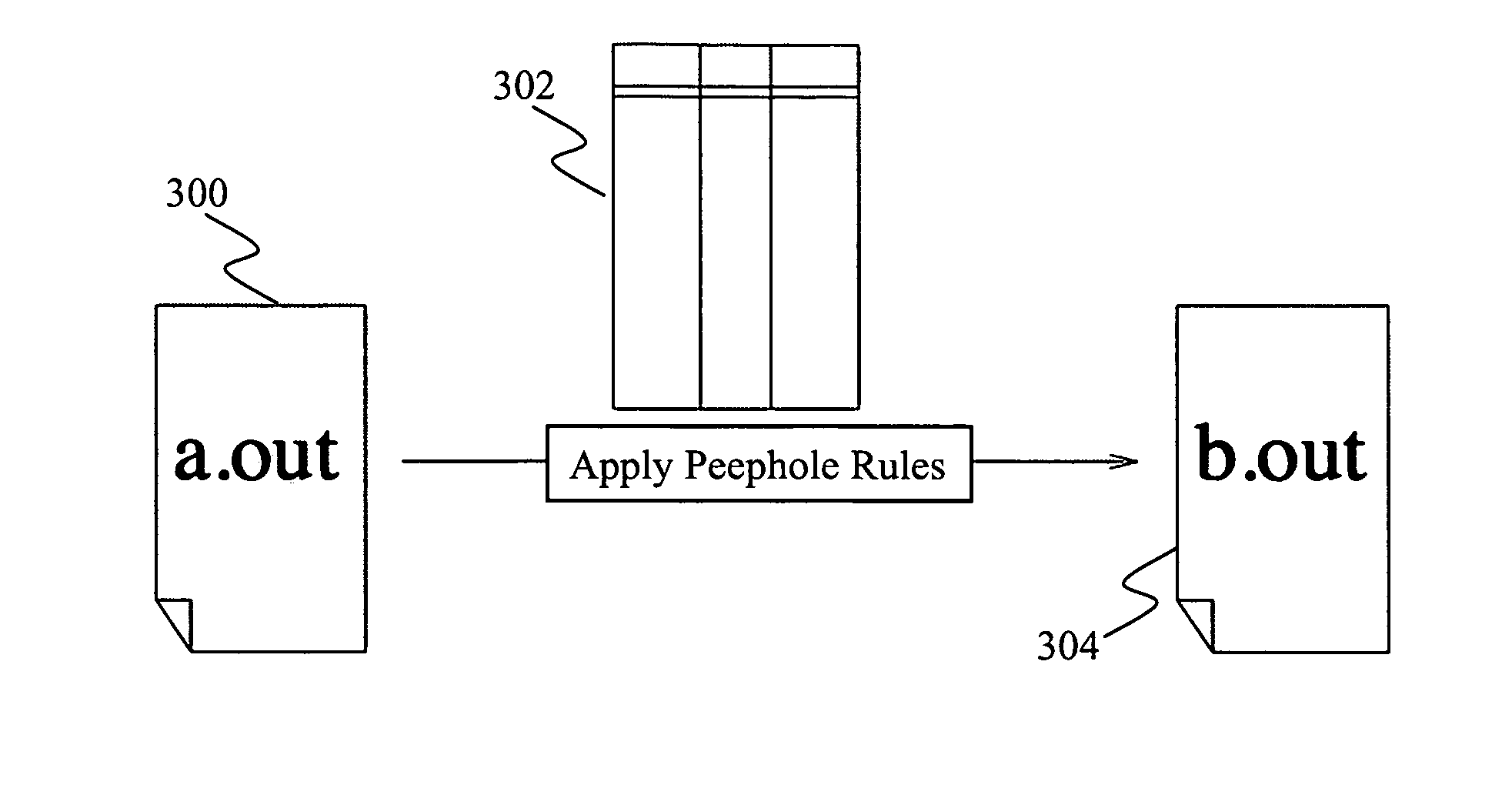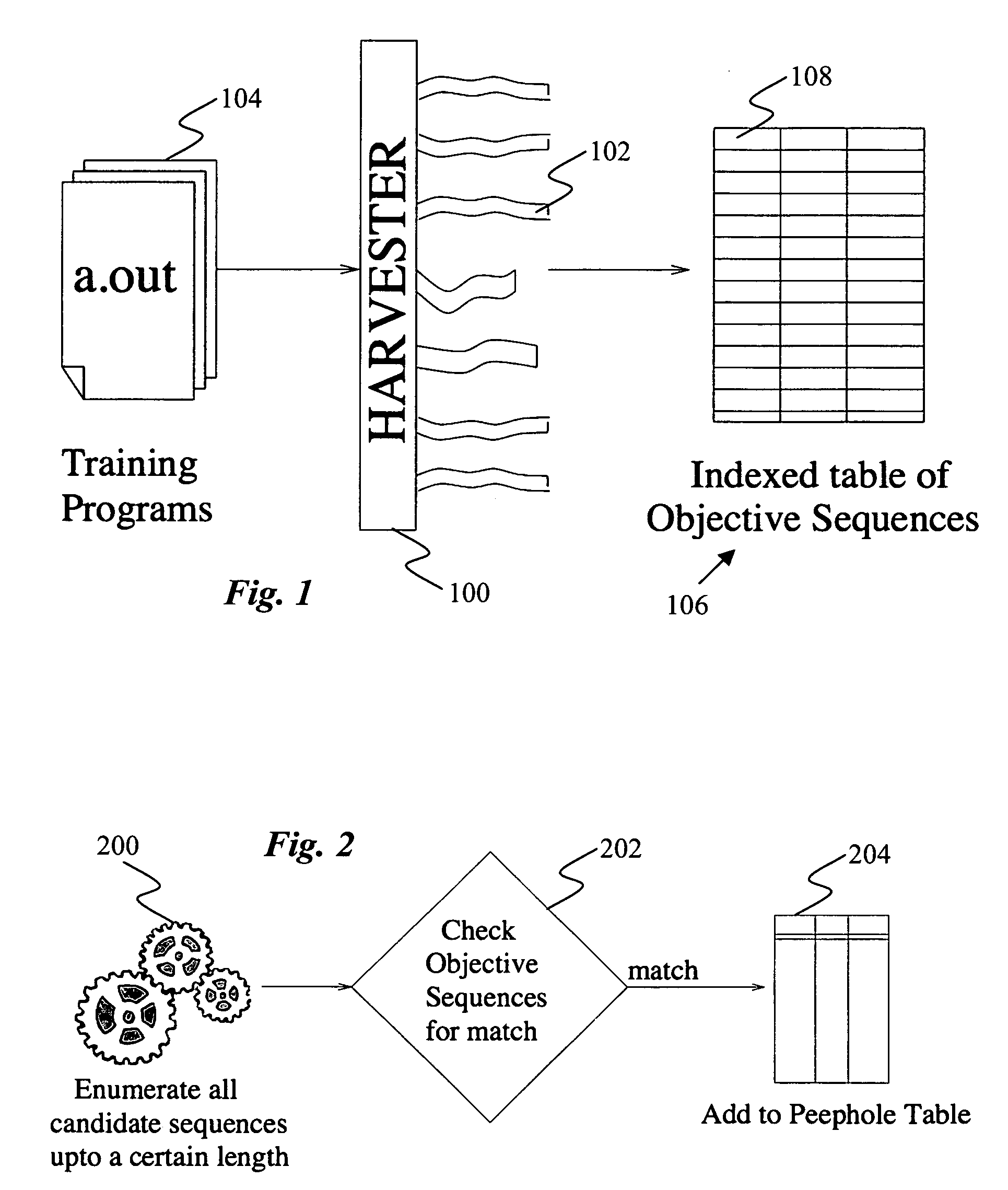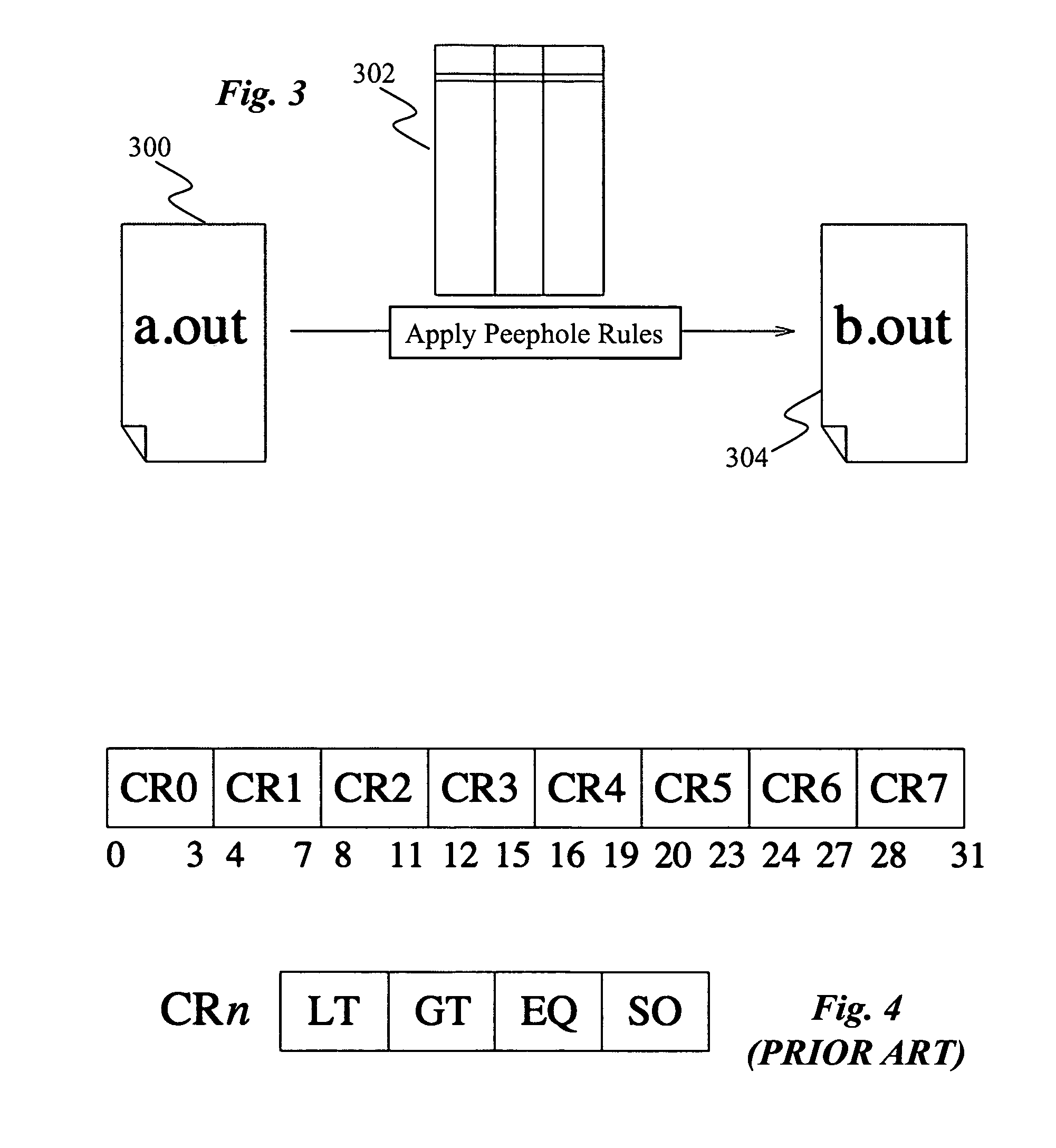Binary translation using peephole translation rules
a technology of binary computer code and translation rules, applied in the field of computerimplemented techniques for translating binary computer code, can solve problems such as compiler programs, software portability, and inability to provide high-level source code, and achieve the effect of efficient code and efficient application running
- Summary
- Abstract
- Description
- Claims
- Application Information
AI Technical Summary
Benefits of technology
Problems solved by technology
Method used
Image
Examples
Embodiment Construction
[0024]The present invention provides a binary translator with equal or better performance than existing tools at a fraction of their development cost. For example, using the present invention an effective and useful binary translator may be completed in a few man-months.
[0025]The present invention provides a technique for binary translation that uses peephole rules to translate code from one ISA to another. Peephole rules are pattern matching rules that replace one sequence of instructions by another equivalent sequence of instructions. Peephole rules have traditionally been used for compiler-optimizations, where the rules are used to replace a sub-optimal instruction sequence in the code by another equivalent but faster sequence on the same ISA. In contrast with this traditional use of peephole rules for optimization on a single ISA, the present binary translator uses peephole rules for translation between different ISAs, i.e., for replacing an instruction sequence on a source ISA ...
PUM
 Login to View More
Login to View More Abstract
Description
Claims
Application Information
 Login to View More
Login to View More - R&D
- Intellectual Property
- Life Sciences
- Materials
- Tech Scout
- Unparalleled Data Quality
- Higher Quality Content
- 60% Fewer Hallucinations
Browse by: Latest US Patents, China's latest patents, Technical Efficacy Thesaurus, Application Domain, Technology Topic, Popular Technical Reports.
© 2025 PatSnap. All rights reserved.Legal|Privacy policy|Modern Slavery Act Transparency Statement|Sitemap|About US| Contact US: help@patsnap.com



